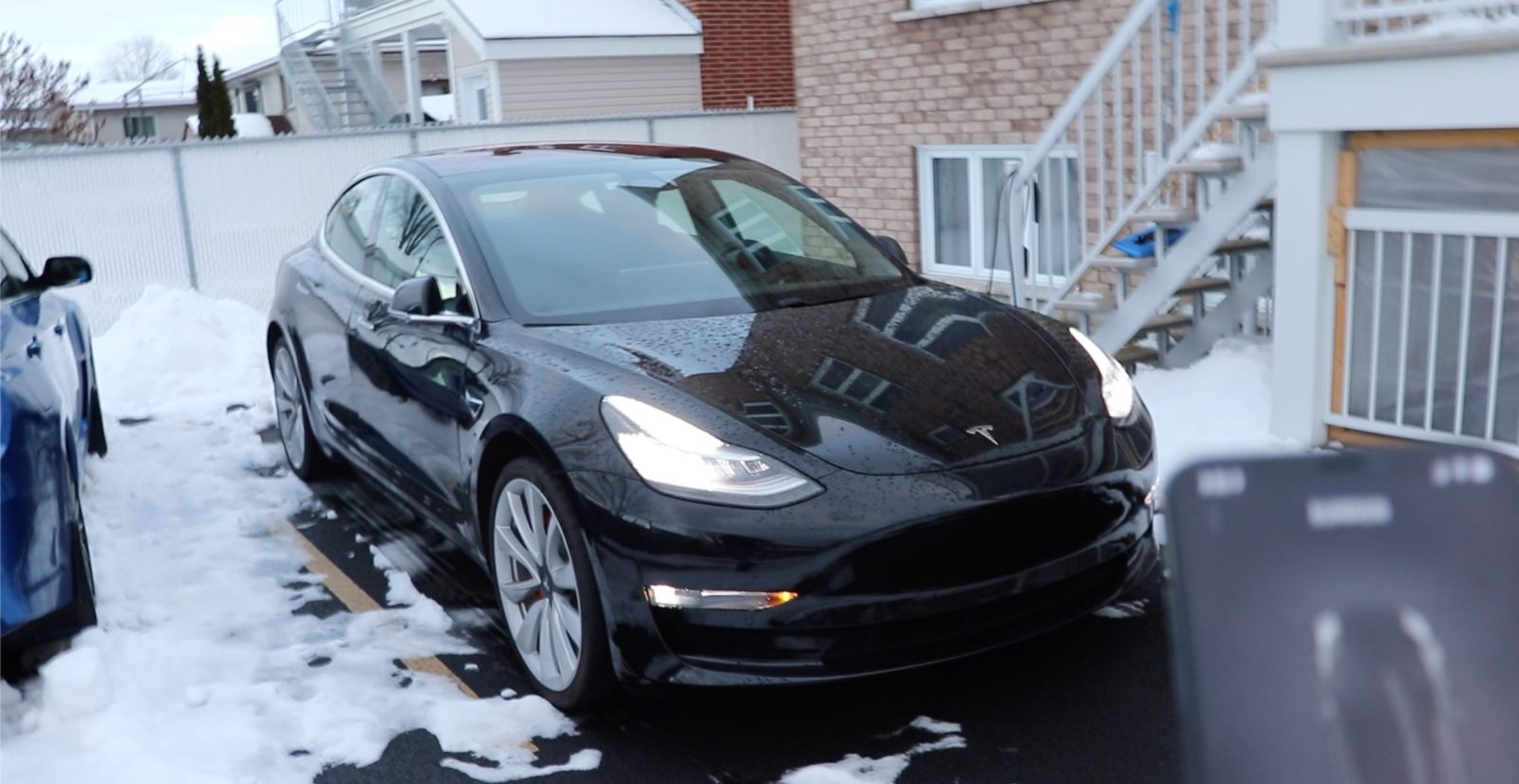
Whether you’re a seasoned EV driver in cold climates or this is your first winter driving an electric vehicle, there’s always more to learn about how to get the best range and performance from your EV when the temperatures drop.
Electrek asked two experts for smart winter EV driving advice. This is what Richard Reina, the product training director at CARiD.com, and Casey Donahue, an energy analyst working as the CEO of Optiwatt, a residential managed charging platform in North America, had to say.
Park in a garage if possible. “It’s always best practice in the winter to park your EV in a garage. Even an unheated garage provides some protection from the cold. A temperature difference of even a few degrees means that the battery of your EV can hold its charge longer. EV batteries lose some range with every degree drop in temperature.” – Richard Reina
Schedule departure. “Scheduling departure gives you the time needed to precondition your vehicle and lets users maximize range by allowing the battery enough time to charge. If you can, try to schedule your departure to allow for preconditioning as well as a full charge. For example, our Optiwatt app can precondition your car for you if you tell it when you want to leave.” – Casey Donahue
Precondition prior to charging. “It’s important to precondition your EV prior to charging because of the negative effects a cold battery can have on vehicle operation. For example, a cold battery drains much faster than a conditioned one. If users want to maximize range, they should warm up their EV just as they would a traditional vehicle. A cold battery can also have a negative effect on regenerative braking, and preconditioning the battery allows regenerative braking to kick in, maximizing the efficiency of the vehicle.” – Casey Donahue
Charge your EV strategically. “A lot goes into getting the most out of the battery in your EV, including when you should charge it, how long you should charge it and more. If you are able to charge at home, you should fully charge it overnight. EV batteries lose range in the colder weather, so starting the day with a full charge is smart and safe.” – Richard Reina
“It’s also important to consider the general wear and tear the harsh weather has on your vehicle, so park it in a covered structure if you can.” – Casey Donahue
[Editor’s note: It’s safe to assume you’re going to experience 30% range reduction in the winter, so plan trips with that in mind.]
Use Eco Mode and reduce use of electric features. “Eco Mode exists to boost your battery’s range by limiting energy supply and power consumption. It maximizes your battery’s efficiency, and it works during cold weather as well. While in Eco Mode, some of your car’s features receive less power so do not perform to the same level. For example, power for acceleration may be reduced. At the same time, consider limiting use of certain electric features, such as heated seats. The EV’s heating system can also be turned down a few degrees. Combined, these steps help conserve battery power.” – Richard Reina
Perform winter prep. “For internal combustion engine vehicles, it’s long been recommended that steps be taken to maximize fuel economy. For example, unnecessary weight should be removed from the car; tires should be properly inflated, rapid acceleration should be avoided, and cruise control should be used to maintain a steady speed. All these tips equally apply to EVs. Almost all EVs have a range meter visible to the driver, so the driver can learn which speeds and driving habits deliver the best driving range.” – Richard Reina
Be prepared for charging at public charging stations. “Public charging stations can get extremely crowded during the winter, especially around long weekends and holidays. Plan your route ahead of time and try to find a large charging site with an ample number of charging stations.” – Casey Donahue
Prepare for a worst-case weather scenario. “If embarking on a longer trip and/or facing the possibility of a storm, be prepared. Before departing, locate EV charging stations along your route. Ensure your cell phone is fully charged and carry a phone charger or portable battery. Have warm clothes, blankets, water, non-perishable food and a small shovel in the EV with you, in case conditions deteriorate and prevent you from continuing.” – Richard Reina
“During the winter, it’s always a good idea to prepare for power outages, especially if you live in a state that experiences blackouts frequently. Check regularly for winter weather advisories and try to charge your car to full battery prior to any severe weather.” – Casey Donahue
And here’s a bonus tip, via Drive Electric Vermont: If you accelerate slowly, brake slowly, let off on the accelerator as you crest a hill, and anticipate stoplights and slow down, it will help maximize the use of regen braking that puts energy back in the battery instead of wasting it with mechanical brakes.
Got any EV winter driving tips that you want to share? Let us know in the comments below.
UnderstandSolar is a free service that links you to top-rated solar installers in your region for personalized solar estimates. Tesla now offers price matching, so it’s important to shop for the best quotes. Click here to learn more and get your quotes. — *ad.
FTC: We use income earning auto affiliate links. More.